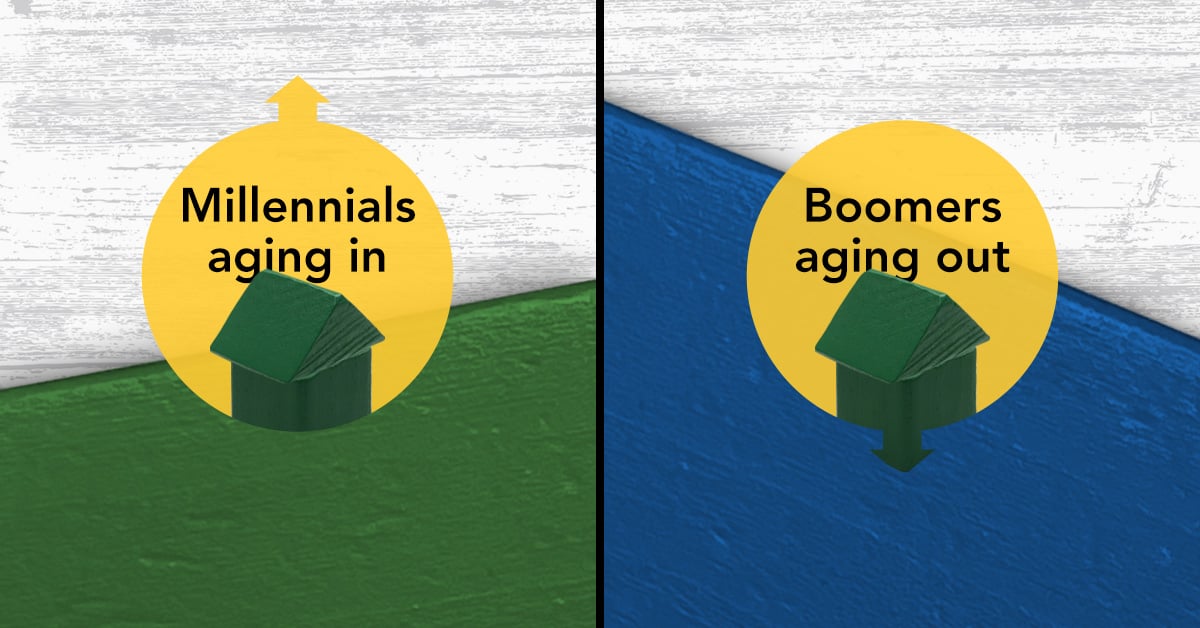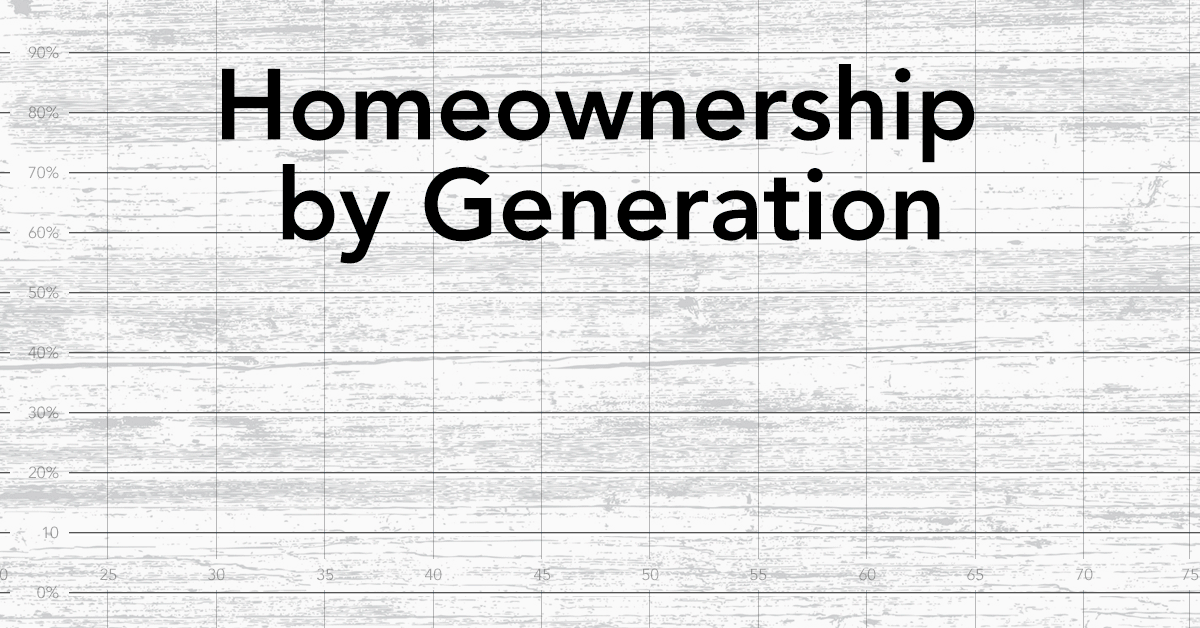For young people throughout the 20th century, as well as Millennials today, becoming a homeowner has been a symbolic representation of achieving the American Dream. At a time when many claim that this dream is at greater risk for Millennials than it was for preceding generations, it is important to investigate whether this fear has a basis in truth. In a recent article by the Economist, it was noted that homeownership in Britain is becoming a thing of the past as homeownership rates for Millennials lag behind those born in the 60’s and 70’s. But how does this compare with U.S. Millennials?
“As it stands, homeownership for the 20-somethings are exceeding expectations for a generation that is supposedly letting go of the American Dream milestone.”
In a previous post regarding Millennial homeownership, we take the broad definition of Millennial (those born in the 1980s through the year 2000), whereas this figure details the homeownership rates for those born in a particular year within that span- specifically, 1990. According to the figure below, the homeownership rate for those born in the 90’s (Millennials) surpasses their 70’s and 60’s counterparts. They are only exceeded by the homeownership rate for the 80’s cohort, which was a generation that entered the household forming stage in the early 2000’s when the housing bubble was under way. Compared to the Baby Boomer generation, the children of the 70’s and 80’s are falling behind. The higher rate for the Baby Boomers could be due to the lower relative cost of housing during the time, as well as social reasons, such as a greater tendency to start a family at a younger age.

Excluding the Baby Boomers, the 1990s generation entered the housing market at record levels for their age group. The fear of a decline in homeownership for this particular generation comes from the idea of shifting demographic and psychographic trends, that individuals are foregoing buying a home due to the pursuit of advanced graduate degrees, declining marriage rates, and postponed child rearing. Other sources say that Millennials desire to live closer to urban resources, making suburban developments less and less attractive. However, as it stands, homeownership for the 20-somethings is exceeding expectations for a generation that is supposedly letting go of the American Dream milestone.
Millennials may be delaying traditional lifestyle choices, but in lieu of forming families, they are pursuing education. Higher education levels leads to higher incomes, and we have shown that this increases homeownership. It is possible that more education may in fact lead Millennials to higher levels of homeownership in the long run, as compared to their predecessors. The American Dream may well remain an American reality, for those who have access to education.



